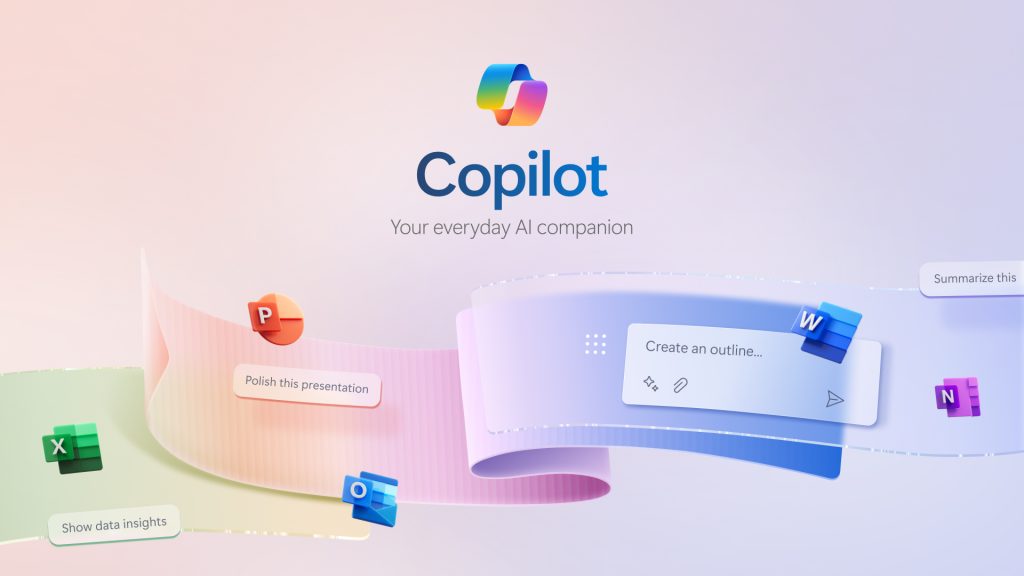2024 marked the “Age of Copilots,” a remarkable year where AI tools like Microsoft Copilot began reshaping the workplace. Once seen as futuristic concepts, tools like Copilot have evolved into practical, everyday assistants for many. From software development to customer service, businesses have been experimenting with these tools, uncovering their immense potential.
Yet, for most organizations, 2024 was just the beginning—a time for beta testing and exploration. As we move into 2025, the conversation shifts from experimentation to execution. This is the year Copilot adoption will become a core strategy for organizations seeking competitive advantage through AI transformation.
The Year Copilot Took Flight
The introduction of Microsoft Copilot in 2023 marked a turning point in the evolution of workplace technology. Organizations quickly began to see tangible benefits, including boosted productivity, faster coding, and more creative content creation.
Early Copilot adopters reported significant gains in productivity and efficiency, with 70% saying they were more productive and 73% completing tasks faster. As businesses experimented with integrating AI into their workflows, Copilot was used to:
- Simplify writing marketing copy or drafting emails, with 64% of users reporting that it helped them spend less time on email processing and 87% noting it made starting a first draft easier.
- Streamline writing and debugging code, allowing developers to complete projects faster and more efficiently, contributing to the 71% of users saving time on mundane tasks.
- Analyze complex data, pull out critical insights and generate detailed reports effortlessly, helping 85% of users reach a good first draft faster.
- Summarize virtual meetings by capturing key takeaways and action items, with 84% of users highlighting how it made post-meeting actions more seamless and 86% noting it made catching up on missed updates easier.
These early use cases demonstrated Copilot’s transformative potential in enhancing productivity and creativity.
Yet, 2024 was a year of discovery—an opportunity for businesses to learn what Copilot could do and how it could fit into their day-to-day operations. As organizations move into 2025, these lessons will set the stage for even greater integration and transformation.
Get Ready for 2025 – The Year of Full Copilot Adoption to Transform Your Business
As organizations build on their 2024 experiences, 2025 is set to usher in the era of full-scale AI adoption. This transition marks a shift from experimenting with Copilot to embedding it into the core of business operations. It’s akin to moving from a casual relationship with AI to a committed partnership.
More processes will be delegated to Copilot, enabling the automation of both routine and complex workflows. With advanced automation, Copilot will support teams by managing end-to-end tasks, allowing employees to focus on strategic initiatives and creative problem-solving. Mustafa Suleyman, Microsoft’s AI CEO, has highlighted this transformation as part of a broader trend where AI systems not only execute tasks but also self-improve, offering deeper collaboration and personalization.
By scaling AI across functions, businesses can anticipate a future where AI serves as a trusted contributor in decision-making and innovation.
The Rise of Copilot and AI Agents
In 2024, Microsoft introduced “Copilot + Agents,” a new way to think about AI tools. These agents act autonomously on behalf of users, managing tasks, providing insights, and driving productivity. At this years Microsoft Ignite conference, Satya Nadella described Copilot as the “UI for AI,” emphasizing its role as a bridge between humans and AI.
Nadella’s vision extends to an “agentic world” where AI agents operate seamlessly alongside humans, managing complex workflows and enabling smarter decision-making. This shift elevates Copilot from an assistant into a proactive agent that anticipates needs, executes tasks, and collaborates with users to achieve goals.
Copilot Adoption in 2025
The applications for Copilot and AI agents in 2025 will extend across industries, with the potential to reshape workflows and drive innovation. As organizations embrace these advancements, Copilot and agents will play a central role in transforming business operations across a variety of sectors. For instance:
- IT Professionals: Developers will benefit from Copilot’s ability to complete code, debug errors, and generate entire functions. GitHub Copilot has already proven invaluable, with industry leaders like Jensen Huang, CEO of Nvidia, noting how automation will empower developers to expedite their workflow.
- Marketing Professionals: Marketers and content creators will continue to leverage Copilot to generate drafts, headlines, and marketing copy, significantly reducing content creation time and enabling a deeper focus on strategy and research.
- Legal and Compliance: Legal professionals will streamline document review and drafting processes, reducing errors and saving time.
- Customer Service: With early applications in tools like Dynamics 365 Customer Service, Copilot has already shown a 12% reduction in case resolution time and empowered agents to resolve 10% more cases independently. We will continue to see the rise in efficiency as Copilot is being utilized more.
- Property Management Companies: Copilot will help property managers streamline owner/tenant communications, initiate and track maintenance requests, and make Association information more readily available for Owners improving operational efficiency and Owner satisfaction.
- Non-Profits: Non-profits can leverage Copilot to enhance donor communication, generate grant proposals, and analyze fundraising data, enabling them to focus more on mission-driven initiatives.
With the continuing advancement of AI, Copilot will soon incorporate features like permanent memory and emotional intelligence, allowing for the creation of personalized and collaborative systems
To achieve these outcomes requires preparation. Organizations must invest in training their teams to use AI effectively, optimize IT infrastructure for seamless integration, and implement change management strategies to ensure cultural and operational readiness.
2025 represents a pivotal moment—a time when organizations can fully integrate Copilot into their workflows, driving measurable outcomes, and paving the way for sustained innovation.

Is Your Business Ready for the New Era of Work with Copilot?
As we anticipate 2025 to be the year of full-scale Copilot and AI agent adoption, it’s clear that this transformation won’t happen automatically. Scaling up AI tools and embedding them into workflows requires an approach to readiness. To fully integrate Copilot and AI agents into daily operations and maximize its potential, organizations should focus on these key areas:
- Ensure your data is secure and compliant with relevant regulations. Copilot’s effectiveness depends on reliable access to data, making security a critical foundation for adoption.
- Equip your workforce with the skills to work effectively with AI. Using Copilot effectively requires understanding how to craft precise prompts and interpret AI-generated insights. Think of it as learning a new and powerful language—the language of AI.
- Encourage teams to explore new ways of working and create an environment where innovation thrives.
- Assess and optimize your technology infrastructure to handle the increased use of AI. Seamless Copilot integration relies on scalable systems that can support higher workloads and data processing needs.
- Align Copilot’s capabilities with your business goals. Plan ahead to identify where AI can drive the most value, whether through automating tasks, enhancing decision-making, or improving customer experiences.
- Use AI responsibly, ensuring that your organization’s approach aligns with its values. Transparent and ethical practices will be essential to gaining the trust of employees and customers alike.
Future use cases for Copilot are vast, from automating complex workflows to delivering personalized customer experiences. Businesses that embrace this opportunity will elevate their productivity, creativity, and strategic insights, securing their place as leaders in the AI-driven future.
Embrace the Power of Copilot
As we move into 2025, the predictions are clear: AI adoption is accelerating and businesses that integrate tools like Copilot into their workflows will lead the way in innovation, productivity, and strategic decision-making.
The impact of Copilot will continue to redefine how we work. From automating tasks and improving collaboration to providing predictive insights and enabling personalized experiences, this AI-powered assistant is transforming businesses across industries. Organizations that embrace this technology today will secure their place at the forefront of their industries tomorrow.
Ready to make Copilot a core part of your team? Our expert team at Sparta Services is here to guide you through every step of your Copilot adoption journey. From crafting a strategic roadmap to delivering hands-on training and ongoing support, we’ll help you to add Copilot to your toolbox and utilize it for your business.
Don’t wait to see what others achieve with Copilot—be the leader in your industry. Let’s discuss how we can help your business work smarter, not harder, in 2025 and beyond. With Sparta Services by your side, you’re ready for the future.

Dave Galy
Dave Galy is the founder and CEO of Sparta Services



